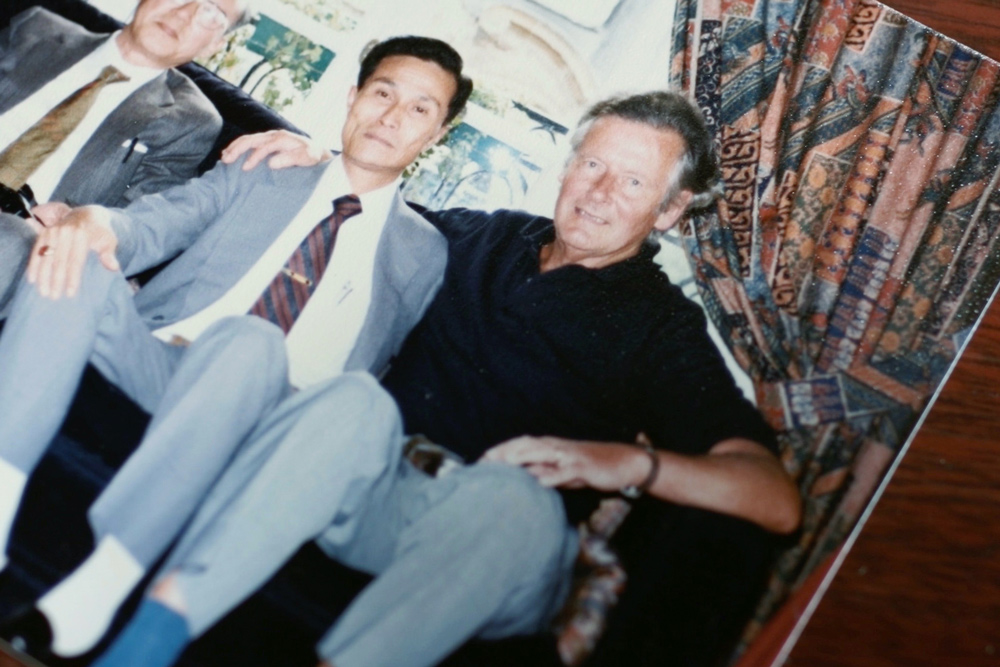!["Postman of Nagasaki" directed by Mika Kawase Documentary looking at the future through communication with the dead [Director's Interview Vol.226]](https://cinemore.jp/images/7740fedf8be1ece43c3015fa9006d454cdc1107850b07cd9ae234c382e88081b.jpg)
© The Postman from Nagasaki Film Partners
"Postman of Nagasaki" directed by Mika Kawase Documentary looking at the future through communication with the dead [Director's Interview Vol.226]
Peter Townsend. He became a hero in World War II as a colonel in the Royal Air Force, and became Princess Margaret's lover after the war, but he is also famous for their breakup due to the outdated values of the British royal family. His tragic love story was also depicted in NETFLIX's original drama " The Crown " (2016-2020). Few people know that Townsend later became a journalist and published numerous non-fiction works. Townsend's book `` The Postman of Nagasaki '' depicts the tragedy of the atomic bomb through the eyes of a man. The main character of this book, Sumiteru Taniguchi, was exposed to the atomic bomb while delivering mail at the age of 16. He has spent his life appealing to the world for the abolition of nuclear weapons.
The movie ``Nagasaki Postman'' is a documentary in which Townsend's daughter, Isabel Townsend, visits Nagasaki and traces the feelings of her father and Mr. Taniguchi. Although the two have already become demons, Isabel travels around the city of Nagasaki, guided by her father's voice memo left on a cassette tape, and learns about the tragedy of the atomic bomb, 2, while experiencing the lives of the people living there. I care about people's lives. The journey is like a pilgrimage through communication with the dead, and Isabel's serene and eloquent appearance cannot help but move the audience into various thoughts. We asked director Kawase to talk about the production process of this film, which presents this rare sense of the world.
Index
- An encounter with a book that was out of print
- Filming without a script
- An editor accompanies the shooting
- I just want a bicycle and a boy standing
An encounter with a book that was out of print
Q: What was the process behind meeting Isabel Townsend and making it into a film?
Kawase: In 2014, I was asked to listen to someone who wanted to reprint an out-of-print book. That book was `` Postman of Nagasaki ''. I borrowed it from the library and read it, and I was very impressed. When I checked, I was surprised to find out that the person who wanted the book to be republished was the person who was the model for the book, Sumiteru Taniguchi.
First of all, I met him and asked him why he wanted to reprint the book. Mr. Taniguchi smiles when he talks about author Peter Townsend. Peter then showed me the Signs colored paper he had left for Mr. Taniguchi. He said, ``The handwriting is blurry and I feel like it's going to disappear, so I put plastic wrap over it and trace it over it.'' I thought, ``This means that the two of us must have become friends.'' From there, I started helping people find publishers who would reprint their books.

“The Postman of Nagasaki” © The Postman from Nagasaki Film Partners
Q: At that time, did you have any thoughts of making it into a movie?
Kawase: There wasn't. Also, at that time I did not tell Mr. Taniguchi that I was a film director. After that, we managed to find a publisher for the book, but the author, Peter, had already passed away, so we Contact his family in France to get permission to reprint it. So in 2016, I met Peter's daughter Isabelle in France. I had lunch with her, and then she invited me to come and see her father's room. Since I had a video camera with me, we decided to do a short interview on the spot. That interview is also used in the movie.
Q: That's the opening interview.
Kawase: Yes. Isabel and I were talking, ``Let's go see Mr. Taniguchi in Nagasaki.'' I wanted to record it on video.
Q: And before Isabel could go see him, Mr. Taniguchi passed away.
Kawase: Yes. At that time, Mr. Taniguchi was hospitalized and it was difficult to contact him, so I was a little worried.
Q: At that point, it seemed impossible to make it into a movie, but what was the factor that helped you overcome that?
Kawase: The fact that a tape containing Peter's real voice was found and Isabel's toughness were two major factors.
Q: It was very fateful that that tape was discovered because you were trying to make a movie.
Kawase: When I listened to the contents of the tape, I felt that Peter was pushing me tremendously, and I felt like there was no way I could run away.
Q: It is very impressive to see Peter's daughter Isabel walking around Nagasaki listening to Peter's voice recorded on the tape. It is as if Isabelle is having a conversation with her father's spirit, and the custom of Obon is added to the background. I felt that ``communication with the dead'' was the backbone of the work.
Kawase: Since I used the camera during the Obon period, that image became especially strong. When I explained to Isabel about the Obon events that take place in Nagasaki, such as the spirit ceremony, she understood very well. The two of us often talked, saying, ``Peter-san and Taniguchi-san are around there, and it feels like they're watching us.''

